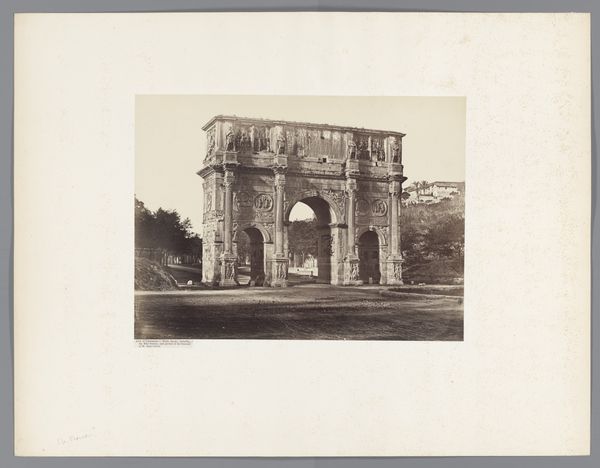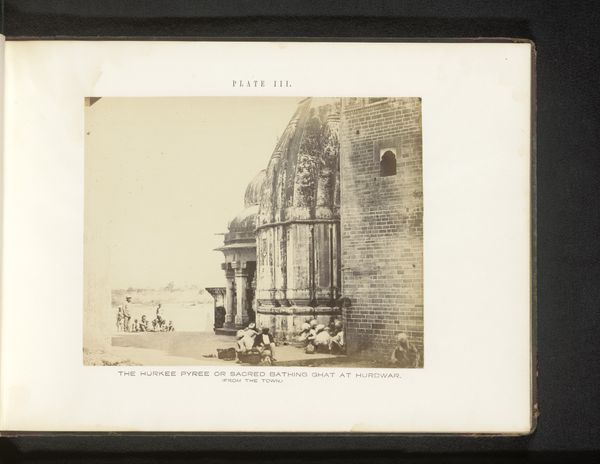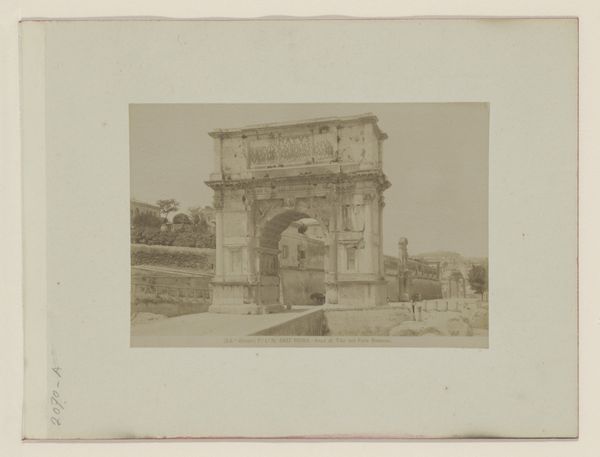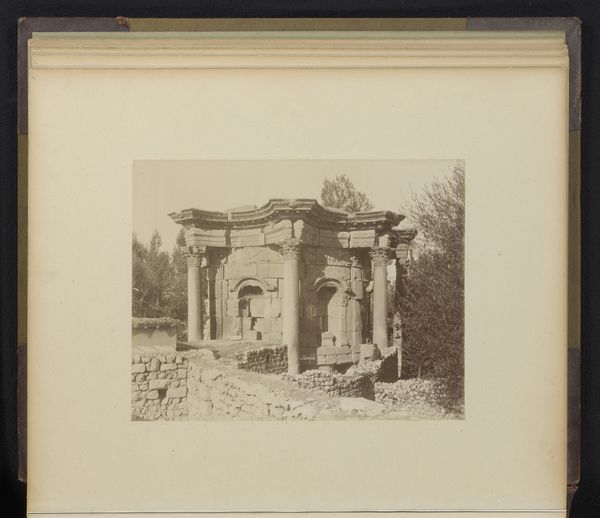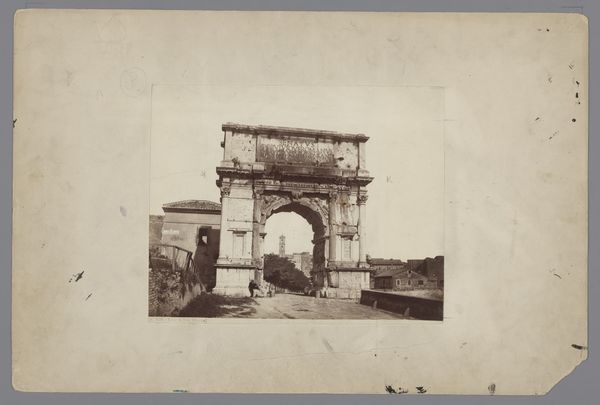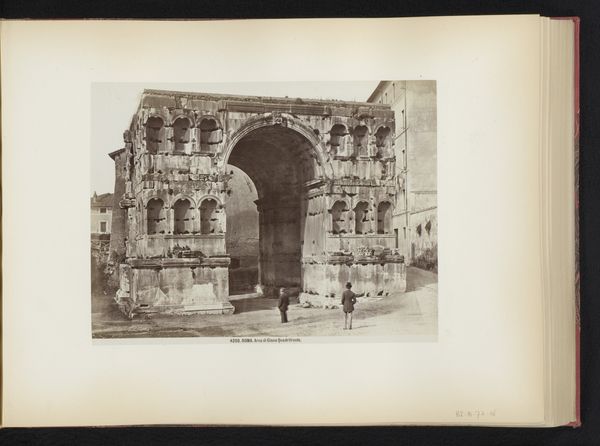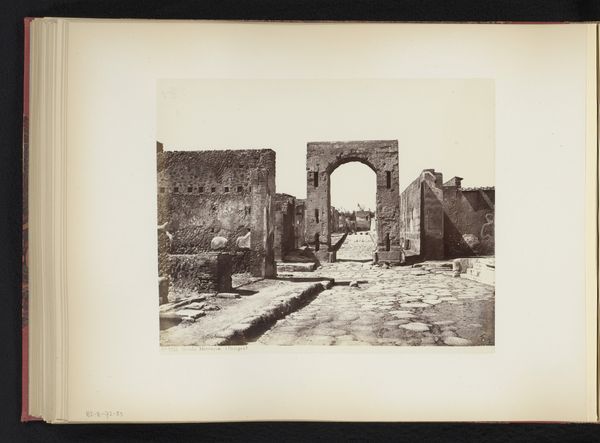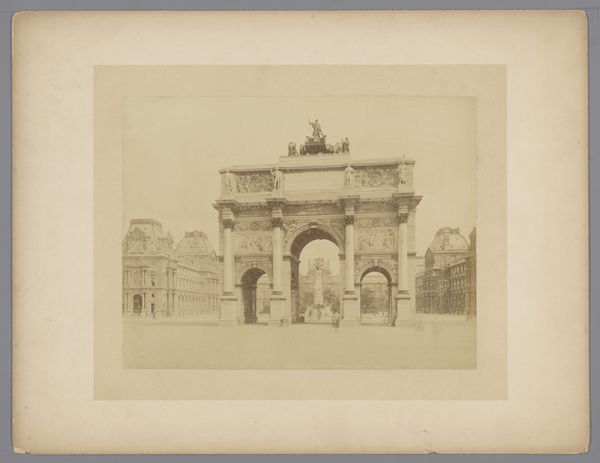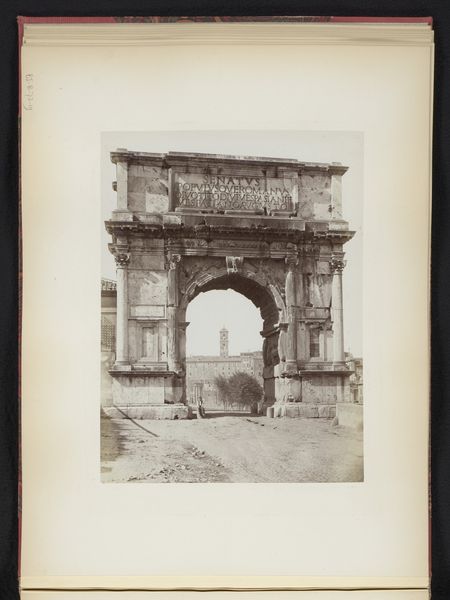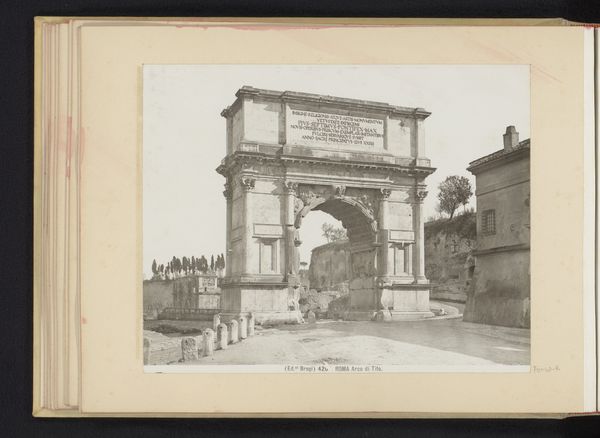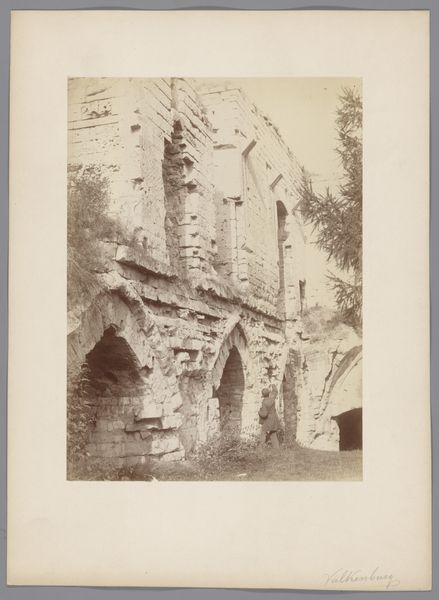
Dimensions: height 178 mm, width 240 mm
Copyright: Rijks Museum: Open Domain
Editor: This photograph by Sommer & Behles, titled "Triomfboog van Constantijn te Rome, Italië," was taken between 1867 and 1874, created as a gelatin-silver print. The grandeur is inescapable, isn’t it? It feels quite… monolithic. What draws your eye when you look at this? Curator: The composition is carefully constructed. Note how the arch dominates the central space, its structure balanced by the presence of a secondary ruin on the right. Consider the semiotic relationship between these forms: one, the symbol of imperial power at its height, and the other, a fragment, indicative of the temporal nature of even the most powerful empires. What do you observe in the tonal range? Editor: Well, it's monochrome of course. I'd say the photograph really exploits the contrasts in light to accentuate the details of the arch itself. I notice all the little decorative flourishes, and they feel important in understanding its intended function. Do those elements hold particular weight for you? Curator: Indeed. The photograph's sharp focus brings forward the ornate details – reliefs, statues, inscriptions - inviting closer inspection. We should consider this work as an attempt to represent ancient architecture using modern photographic methods, which adds another layer of interpretation to its complex historical significance. How do you think the artist is commenting on the ruin, through their choices of light, focus and composition? Editor: That’s an interesting question. I wonder if they’re suggesting that even in ruin, there's a kind of structured beauty that's meant to still elicit an emotional response. I'm beginning to think about the role of the photographer here—as almost an archaeologist, meticulously recording every surface and plane. Curator: Precisely. We've unpacked the structural relationships and materiality of the image, revealing a formal dialogue across time, medium and theme. Editor: Yes, this analysis has deepened my understanding; I hadn't considered it beyond the immediate impression of a beautiful scene. I will carry the principles we have discussed into the next gallery.
Comments
No comments
Be the first to comment and join the conversation on the ultimate creative platform.
